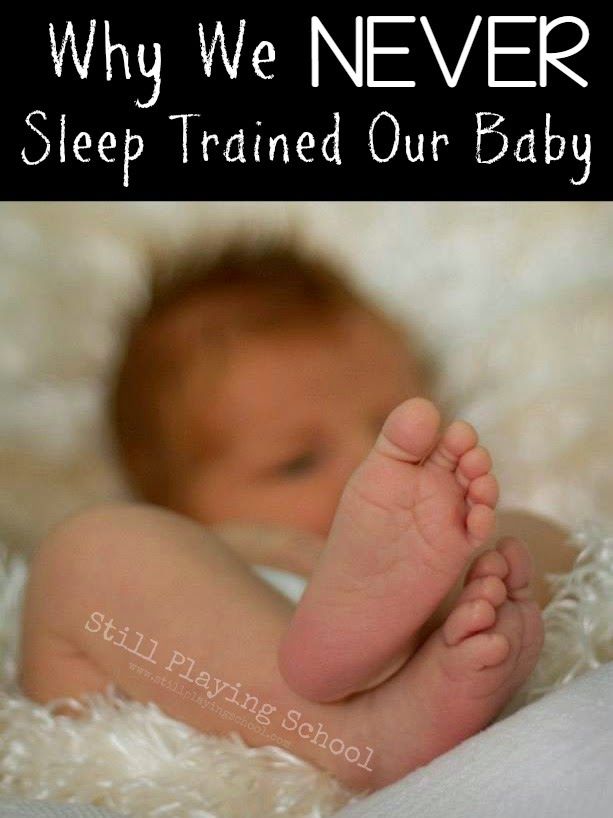Sleep methods for babies
6 most popular baby sleep-training methods explained
Exhausted new parents and certified sleep consultants swear by some of these sleep-training techniques. Here’s what you need to know before you get started.
For the first few months of his life, Laura Welk’s baby, Greyson, was a dream sleeper. He had regular naps during the day, and all it took was a calming bottle in the evenings and he would be fast asleep. He would wake up only once a night for a feed, and that would last him until morning.
But when he was about three-and-a-half months old, the routine fell apart. “I would feed him, but he wouldn’t be asleep at the end of the feed,” recalls Welk. “I would rock him until he fell asleep and put him down, and then he would wake up 30 minutes later and I would do it all over again.” Desperate for some rest, Welk brought Greyson into bed with her, but then she ended up just lying still, holding a pacifier in his mouth all night long. “I didn’t know anything about sleep,” says Welk. “I didn’t know you couldn’t just rock them to sleep and then put them down.”
When Greyson was four months old, the first-time parents contacted a sleep consultant, who clued them into a few things that were getting in the way of Greyson sleeping well: All the rocking and pacifying were now ingrained in him as sleep associations—or crutches he needed to fall asleep and stay asleep. They decided to sleep-train him.
Sleep training is a loaded phrase, and one that is often used synonymously with letting your baby self-soothe, or “cry it out,” but that’s not the whole picture, says Alanna McGinn, a certified sleep consultant and the founder of Good Night Sleep Site. “It’s more about being able to teach your baby that they are capable of falling asleep independently,” she says. You want your baby to be able to nod off on their own—ideally without nursing, rocking or using a pacifier—because whatever tools they use to fall asleep at bedtime are the same things they’re going to wake up looking for during the night. Yes, this can feel unloving and even downright cruel. You’ll find experts on both sides of the issue: Breastfeeding advocates say it’s normal for babies of all ages to wake up multiple times to nurse, and even the sleep coaches interviewed for this article disagree with how much crying and distress are acceptable.
Yes, this can feel unloving and even downright cruel. You’ll find experts on both sides of the issue: Breastfeeding advocates say it’s normal for babies of all ages to wake up multiple times to nurse, and even the sleep coaches interviewed for this article disagree with how much crying and distress are acceptable.
Recent research has shown that, at least in babies older than six months, sleep training with controlled crying and bedtime fading (both described below) improved babies’ sleep and didn’t lead to increased levels of cortisol. This provides some reassurance that a little bit of crying—if it leads to better sleep—likely won’t do your baby any harm.
Paediatrician Michael Dickinson, president of the Canadian Paediatric Society, advises parents to trust their instincts. “I don’t think there’s any evidence to suggest that it’s psychologically damaging to let your baby cry, but I think people need to be reasonable,” he says. “For most of us, letting your baby cry is five to 10 minutes. ”
”
There’s also no need to institute a regimented cry-it-out plan if what you’re currently doing is working for your family. But good sleep habits never hurt, and being able to fall asleep on one’s own is a necessary life skill. If you sleep-train at a time that’s developmentally appropriate for your baby and with the basic ingredients of healthy sleep in place, you can minimize the amount of crying your baby (and, let’s face it, you) will do.
What’s the right age for sleep training?Most sleep coaches say the ideal time to start sleep training (or promote independent sleep, not necessarily using the cry-it-out method) is based on your baby’s development, but is usually somewhere between four and six months, when your baby hasn’t had much time to get used to nursing or rocking to sleep. At this stage, most babies are also developmentally ready to learn the skill of falling asleep on their own, explains Jennifer Garden, an occupational therapist who runs Sleepdreams in Vancouver. Around four months of age, some babies go through a sleep regression because their sleep cycles change and there are longer periods of lighter sleep per cycle. “It’s a great time to work on independent sleep skills,” says McGinn. Other babies’ slumber derails around this time because they are working on new skills, like moving around and rolling. Some parents choose to wait until things settle down before embarking on a sleep-training method, but you don’t have to, says McGinn.
Around four months of age, some babies go through a sleep regression because their sleep cycles change and there are longer periods of lighter sleep per cycle. “It’s a great time to work on independent sleep skills,” says McGinn. Other babies’ slumber derails around this time because they are working on new skills, like moving around and rolling. Some parents choose to wait until things settle down before embarking on a sleep-training method, but you don’t have to, says McGinn.
If your baby is older than six months, don’t worry, McGinn says: “It’s never too late to develop good sleep habits.” Dickinson says he finds nine months to be a bit of a sweet spot for parents in terms of getting babies to sleep through the night. “They are at a good age for understanding routines and don’t need to eat during the night,” he explains.
The age of your baby might determine what kind of sleep-training method you choose, though. You could try a gentle shush-pat technique with a five-month-old, but you’ll likely have to leave a one-year-old in the crib as they protest (cry or scream) about the new bedtime arrangement.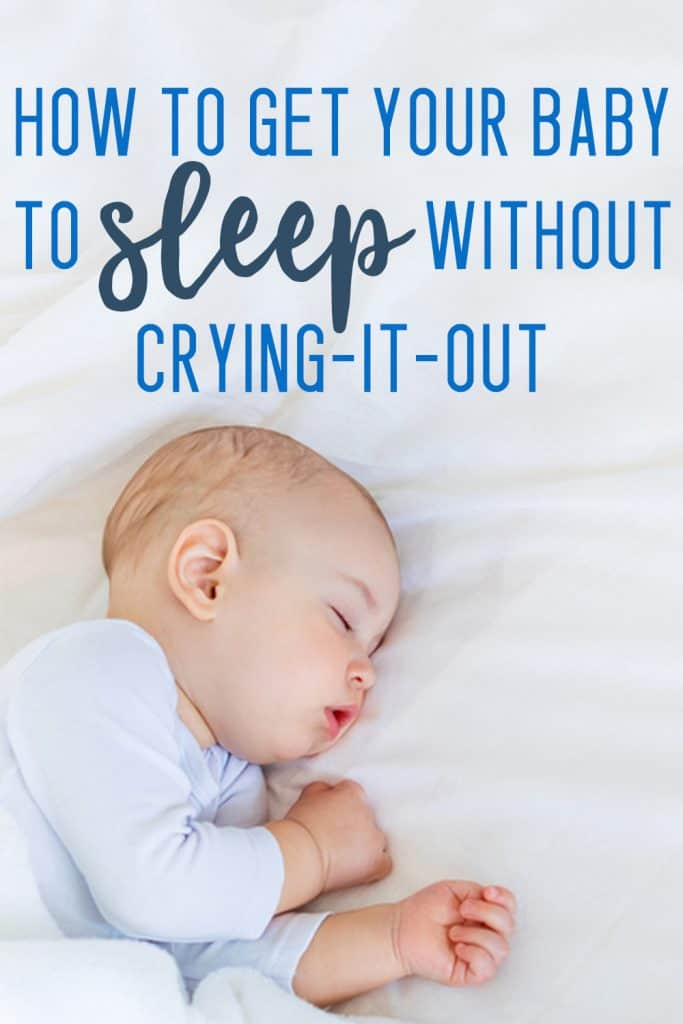 Don’t attempt a formal sleep-training method before four months, until your baby is able to go longer in between feeds and their circadian rhythm starts to develop. (Many babies this age still feed in the night—contrary to popular thinking, sleep training isn’t synonymous with night weaning.) Dickinson says that many four-month-old babies are biologically able to go through the night without a feed, but that doesn’t mean you shouldn’t respond and feed them if other methods of calming them aren’t working. Since every situation is different, we recommend checking with your doctor before withholding your baby’s night-time feeds.
Don’t attempt a formal sleep-training method before four months, until your baby is able to go longer in between feeds and their circadian rhythm starts to develop. (Many babies this age still feed in the night—contrary to popular thinking, sleep training isn’t synonymous with night weaning.) Dickinson says that many four-month-old babies are biologically able to go through the night without a feed, but that doesn’t mean you shouldn’t respond and feed them if other methods of calming them aren’t working. Since every situation is different, we recommend checking with your doctor before withholding your baby’s night-time feeds.
Before getting started
Before you even think about “training” your baby to fall asleep on their own, make sure you’re following a regular schedule and putting them to bed at a consistent time each night (hint: early is usually better, typically around 7 or 8 p.m.). Starting at about two months old, it’s a good idea to try to put them down drowsy but awake whenever you can, just to get them (and you) used to it, even if they fuss a bit. Make sure that they’ve been awake for an appropriate amount of time before bed (an over- or under-tired baby will have trouble falling asleep), and establish a calming and consistent bedtime routine, like a feed, bath or massage followed by pyjamas and stories or songs. Some experts recommend feeding at the beginning of the routine to avoid having the baby associate the feeding with falling asleep. Ideally, your baby won’t have started to nod off at any point during your bedtime routine. “You really want to make sure your baby is primed for sleep,” says Pamela Mitelman, a psychologist in Montreal who specializes in infant and child sleep. Be conscious, too, of filling their daytime awake periods with enough activity and stimulation, says Garden. “Kids need to be moving in all sorts of ways when they are awake, not just sitting in a bouncy chair,” she says.
Make sure that they’ve been awake for an appropriate amount of time before bed (an over- or under-tired baby will have trouble falling asleep), and establish a calming and consistent bedtime routine, like a feed, bath or massage followed by pyjamas and stories or songs. Some experts recommend feeding at the beginning of the routine to avoid having the baby associate the feeding with falling asleep. Ideally, your baby won’t have started to nod off at any point during your bedtime routine. “You really want to make sure your baby is primed for sleep,” says Pamela Mitelman, a psychologist in Montreal who specializes in infant and child sleep. Be conscious, too, of filling their daytime awake periods with enough activity and stimulation, says Garden. “Kids need to be moving in all sorts of ways when they are awake, not just sitting in a bouncy chair,” she says.
Once you’ve got all the ingredients of a good night’s sleep in place and you’re ready to let your baby learn how to fall asleep on their own, here are six common methods to consider.
1. Check and console (also known as the Ferber method, graduated extinction, progressive waiting or the interval method)
There are many variations on the check-and-console method, but the general principles are the same: You want to continue to check on your baby at preset intervals but never feed or rock them to sleep, as that would mean they aren’t falling asleep on their own.
After going through your bedtime routine, put your baby in their crib, leave the room and wait a specific amount of time (say, a minute). Then go in and reassure your baby with words like “Mommy loves you” or some kind of touch, such as a rub or pat. McGinn says it’s preferable not to pick the baby up. Garden, on the other hand, reserves this method for babies seven months and older. (In her opinion, younger babies require a parental presence so they know they haven’t been abandoned, especially if they’ve worked themselves up into a frenzy.)
Continue to leave and then check on them, increasing the amount of time between visits until you’ve reached about 10 or 15 minutes, and then just keep at it until they fall asleep.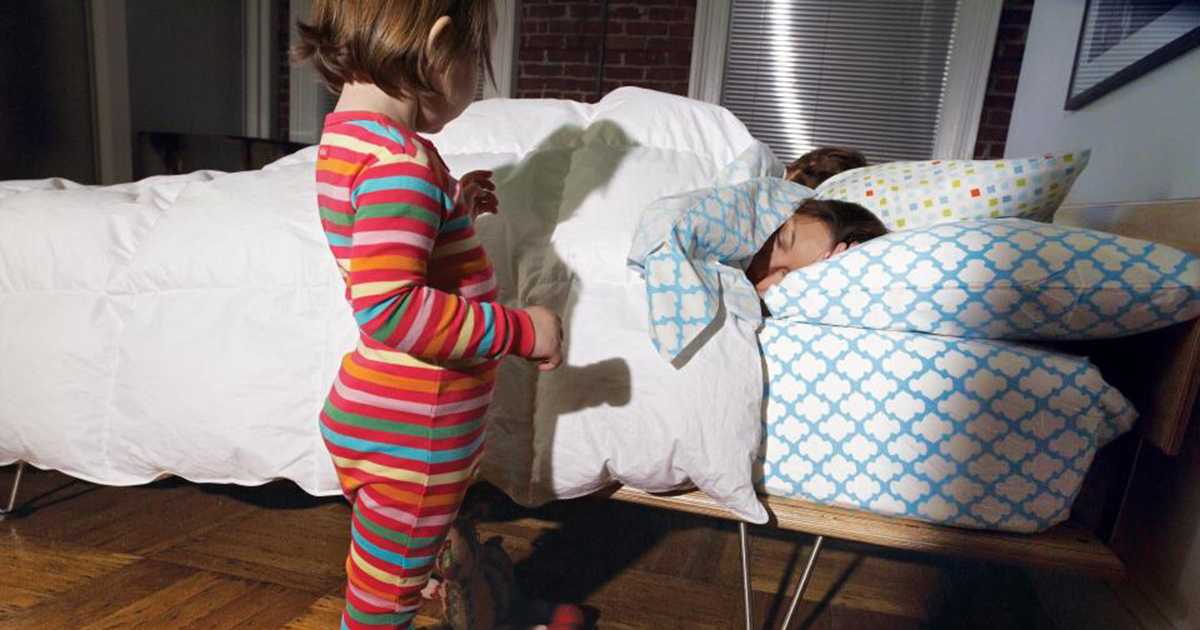 When they wake up, you start the check-and-console intervals all over again.
When they wake up, you start the check-and-console intervals all over again.
This technique could take up to a week to work, but you should start seeing some progress after a few nights. Many experts recommend keeping a sleep-training log to help reassure yourself. Some parents find that going in to the room aggravates the baby even more and might consider a more direct method, like full extinction.
2. Extinction, or cry it out (CIO)
The idea behind extinction (or full extinction to differentiate it from graduated extinction) is that you want to extinguish the behaviour (crying) by not responding to it. As with the check-and-console method, go through your bedtime routine, put them in their crib awake, say good night and walk out. This is certainly the most controversial sleep-training method, and even experts disagree on what you should do next—it all depends on what stage your baby is at developmentally, as well as what works for the parents.
McGinn, for example, suggests leaving your baby until the morning, unless you’ve predetermined that they still need a feed in the night.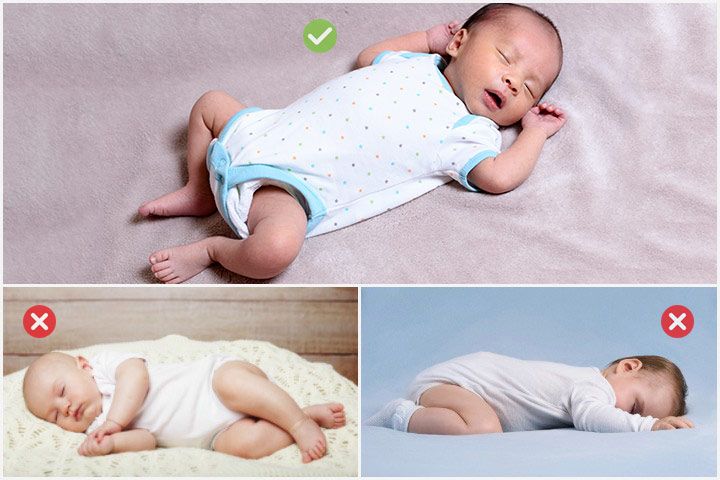 “That first night can be rough,” says McGinn. “They could be up every hour crying.”
“That first night can be rough,” says McGinn. “They could be up every hour crying.”
Mitelman, on the other hand, recommends that parents wait for at least one or two wake-ups before going back into the room. Then, if the baby wakes up after midnight, she believes it’s OK to go back in, comfort your baby for a few minutes and then leave again. She also supports scheduling in regular night-time feeds if your baby still needs them.
Parents are often hesitant to go this route, worried about how much crying will be involved. While McGinn doesn’t deny it can be difficult at first, she finds parents are often surprised by how quickly it works. “Yes, there is a lot of crying, but it’s short term,” she says. “You might get a lot of crying for two to three nights, but then every night is less and less.” She says you should see significant improvement with this method by night three or four but adds that it’s important to try it for a week before determining that it’s not working.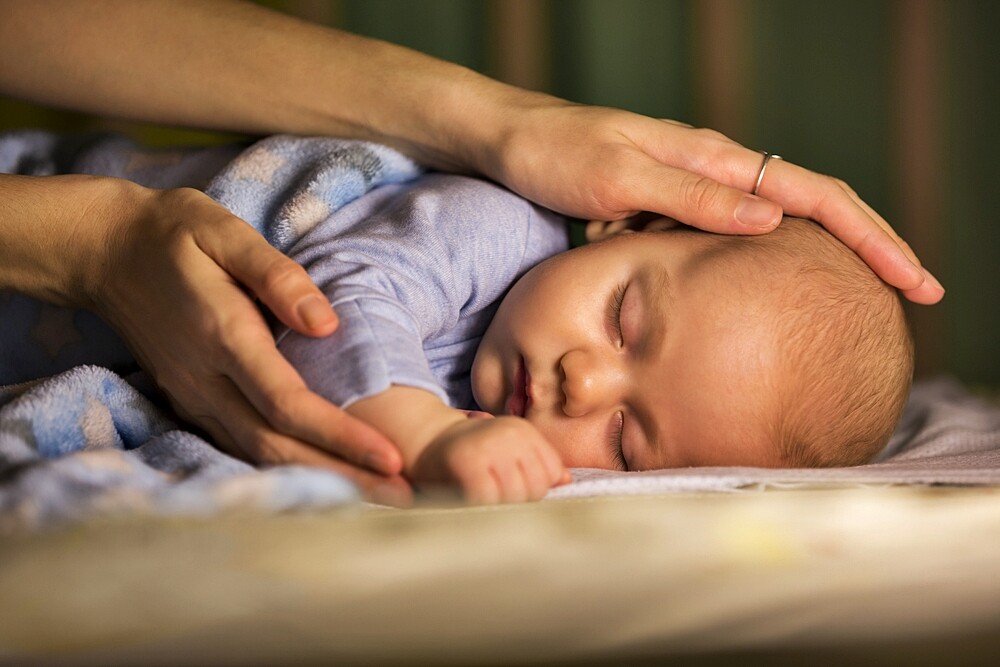
3. Chair method
This is a very gradual sleep-training method ( McGinn gives her clients a two-week plan for implementation) and requires a lot of discipline on the part of the parents. Again, you prep your baby for bed, but instead of leaving the room, you sit in a chair next to the crib. When they fall asleep, leave the room, but every time they wake up, sit back down in the chair until they fall back asleep. Every few nights, move the chair further and further away until you’re out of the room.
“The pro of this method is that mom or dad is there and present,” says McGinn. “But the con is, there will likely still be some crying, and now baby is watching you watch them cry. It can be really hard to be consistent with this method.”
Mitelman doesn’t recommend this method to her clients because she says having a parent in the room but not responding to the baby is confusing and may also be too much stimulation, depending on the baby’s age and developmental stage.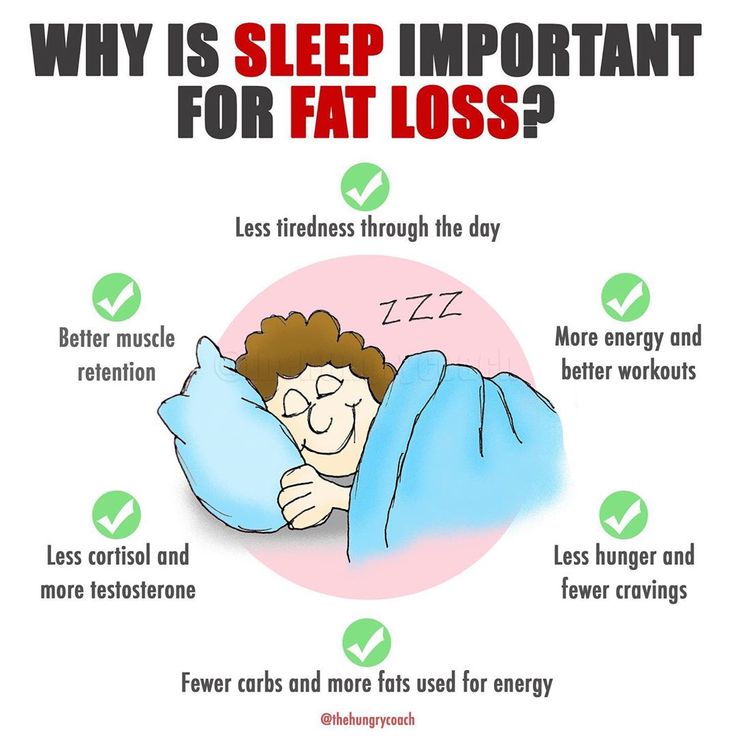 “They can get so escalated to the point that they can’t calm themselves down,” she says.
“They can get so escalated to the point that they can’t calm themselves down,” she says.
4. Pick up, put down and shush-pat
For babies younger than seven months, Garden prefers an approach where you stay in the room without giving them too much help to fall asleep. For example, you could stand over their crib and shush them, pat their tummy or apply pressure to calm and reassure them.
Another option is to let them fuss for a bit, but when they start to escalate, pick them up to soothe them but put them back down before they fall asleep. “Our job is to help calm the child, and their job is to fall asleep,” says Garden.
While these methods can work really well for younger babies, after six or seven months, your presence might make your baby more upset, and picking them up and putting them back down will likely be too much stimulation.
5. Bedtime-routine fading
With the fading technique, continue with whatever method you were using to help your baby fall asleep (such as rocking or nursing), but decrease the amount of time you spend doing it until, in theory, you don’t have to do it at all. This is a great technique for minimizing crying, but unfortunately, many parents find it difficult to sustain. “There has to be an end in sight,” explains Mitelman. “For example, we’ll meet this need for five to seven days and then we’ll pull back a little bit.” But if you’re willing to stick to the plan and get your baby to the end goal of going to bed without your assistance, Mitelman says it’s worth a try. “Whichever way the child can get to sleep independently is fine because that’s the key ingredient to sleeping through the night.”
This is a great technique for minimizing crying, but unfortunately, many parents find it difficult to sustain. “There has to be an end in sight,” explains Mitelman. “For example, we’ll meet this need for five to seven days and then we’ll pull back a little bit.” But if you’re willing to stick to the plan and get your baby to the end goal of going to bed without your assistance, Mitelman says it’s worth a try. “Whichever way the child can get to sleep independently is fine because that’s the key ingredient to sleeping through the night.”
6. Bedtime-hour fading
Not to be confused with the bedtime-routine fading technique described above, bedtime-hour fading involves putting your baby into the crib at the time they usually end up dozing off, and making that their new bedtime for a couple of nights, and then gradually moving it to an earlier time. For example, say you always put your baby down at for the night at 7:30 p.m., but they tend to fuss or cry in the crib for 20 minutes or more, until they finally nod off around eight. This means 7:50 to 8 p.m. is actually their “natural bedtime,” even though you’d like it to be earlier. To figure out when your baby naturally falls asleep, keep a diary for a few nights to track when they finally settle for the night. (Using a video monitor can help with this.) A few nights later, move the whole routine 15 minutes earlier. Continue moving the bedtime earlier by 15 minutes each night (if needed) until your baby has shifted their old habits to nod off at the desired time instead of the later one.
This means 7:50 to 8 p.m. is actually their “natural bedtime,” even though you’d like it to be earlier. To figure out when your baby naturally falls asleep, keep a diary for a few nights to track when they finally settle for the night. (Using a video monitor can help with this.) A few nights later, move the whole routine 15 minutes earlier. Continue moving the bedtime earlier by 15 minutes each night (if needed) until your baby has shifted their old habits to nod off at the desired time instead of the later one.
While McGinn doesn’t use this technique with her clients, she says the trick with any training routine is to be very consistent and commit to moving the bedtime earlier. “It’s easy to become inconsistent with things or give up and then the child has a really late bedtime,” says McGinn
The greater good
On the advice of a sleep consultant, Welk and her husband took away Greyson’s pacifier, moved his bottle to before his bath (so he wouldn’t associate feeding with going to sleep) and chose to start with a very gentle method (because he was only four months old at the time). Greyson’s dad put him in the crib and stood next to him, patting him until he fell asleep, for about a week. That went well, and then they started leaving him immediately after putting him in the crib without patting him fully to sleep. “For about a month, he would cry or fuss every night for 10 to 15 minutes before falling asleep,” recalls Welk. It was hard to hear her baby cry, but she feels confident that it was for the greater good because they were both well rested and happy during the day. Now, Greyson is 11 months old and a champ sleeper, having weaned himself from night feeds at seven months.
Greyson’s dad put him in the crib and stood next to him, patting him until he fell asleep, for about a week. That went well, and then they started leaving him immediately after putting him in the crib without patting him fully to sleep. “For about a month, he would cry or fuss every night for 10 to 15 minutes before falling asleep,” recalls Welk. It was hard to hear her baby cry, but she feels confident that it was for the greater good because they were both well rested and happy during the day. Now, Greyson is 11 months old and a champ sleeper, having weaned himself from night feeds at seven months.
If you’re on the fence about sleep training, it can be helpful to think of it this way: What is my baby’s developmental need right now? “At 11 months, they don’t need to eat during the night but they do need consistent sleep,” says Garden. Yes, those nights of crying are heartbreaking. But chances are, if you’re considering sleep training, it’s because what you’re currently doing isn’t working for you.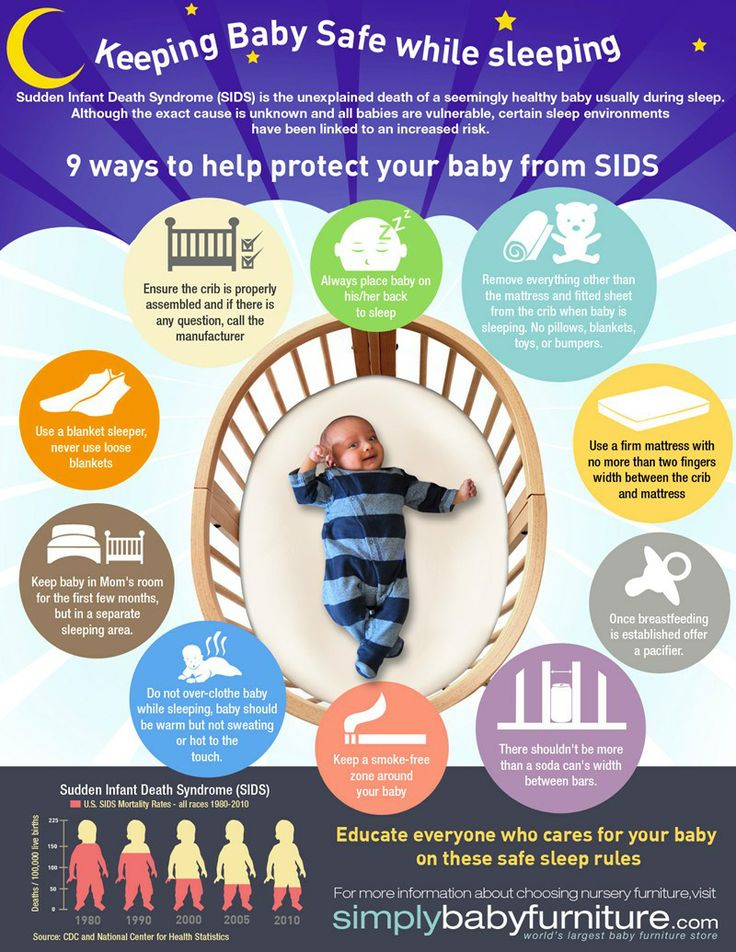
As your baby gets older and their sleep needs change, make sure that you’re adjusting wake times, naps and bedtimes accordingly to help them continue to easily fall asleep and stay asleep. Some parents think of sleep training as a “one-and-done” endeavour: You endure a lot of crying for a few days and your prize is a perfect sleeper. But it’s really a lifestyle change—once your child has the skills to fall asleep, they’ll still need routines, consistency and help adapting when life throws curveballs, like starting daycare, the arrival of a new sibling or going on a trip (where they may have to sleep in a different space or crib). Colds and illnesses, as well as time changes, can also throw a wrench in your perfect schedule. The trick here is to get back on track as soon as possible. If you start allowing or enabling the old, bad habits and sleep associations, it will take longer to return to the regular routine.
McGinn likens it to riding a bike: Sure, kids are a little wobbly when you get the bike out after the winter, but soon they’re riding like pros again. “You never have to re-teach the skill of falling asleep,” she says.
“You never have to re-teach the skill of falling asleep,” she says.
Do your research, talk to your doctor and if you’re overwhelmed, consider hiring a sleep consultant or taking a workshop. Your baby’s sleep might seem like a mystery to you, but there are people who understand the complexities and can help. While not everyone agrees with every approach, no one would argue with the benefits of a good night’s sleep, for babies and exhausted parents alike.
Watch Baby Grow!
Subscribe to Today’s Parent’s baby newsletter and find out what to expect for every stage and milestone, from birth to two years.- Email*
- Baby's due/birth date*
Month223456789101112
Day12345678910111213141516171819202122232425262728293031
Year2025202420232022
- CAPTCHA
- Consent*
Yes, I would like to receive Today's Parent's Baby newsletter. I understand I can unsubscribe at any time.
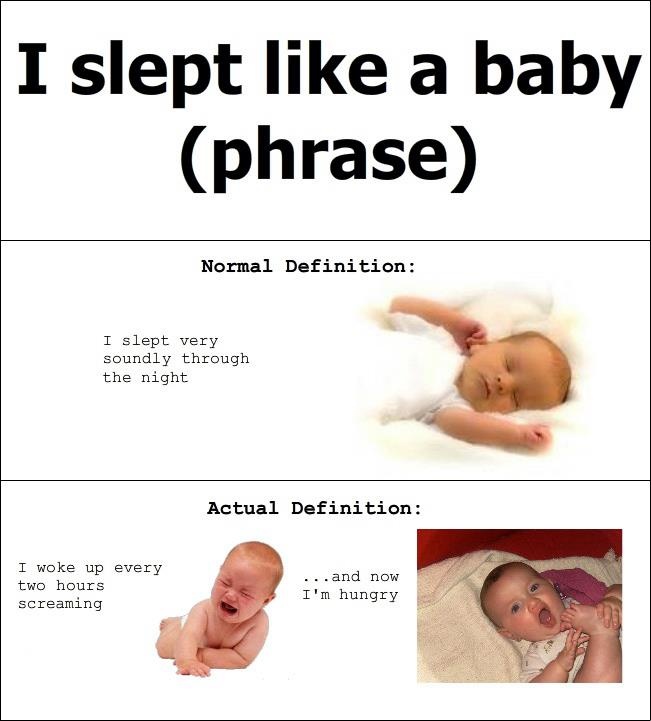 **
**
FILED UNDER: Newborn care Newborn sleep service seo Sleep problems Sleep training
How to Sleep Train Your Baby – Happiest Baby
On This Page
- Sleep Training Basics
- How to Sleep Train a Baby
- Sleep Training Tips
While it is true that sleep training is way tougher on you than your baby, that doesn’t mean you need to suffer while you navigate this big baby milestone. In fact, sleep training doesn’t have to mean buckets of tears for you or your baby! Here’s everything you need to know about sleep training basics, from when to start sleep training to how.
Sleep Training BasicsWhat is sleep training?This may surprise you, but sleep training and “cry it out” are not synonymous! Instead, crying it out is only one type of sleep training method. There are many ways you can sleep train your baby...and they certainly don’t all require tears! In a nutshell, sleep training is the process of teaching your baby to fall asleep—and fall back to sleep—by themselves. Think of it like this: Sleep training offers your baby the tools they need to self-soothe...a must-have skill!
There are many ways you can sleep train your baby...and they certainly don’t all require tears! In a nutshell, sleep training is the process of teaching your baby to fall asleep—and fall back to sleep—by themselves. Think of it like this: Sleep training offers your baby the tools they need to self-soothe...a must-have skill!
While all babies are different, little ones are usually developmentally ready for sleep training between 4 and 6 months old. This is the sleep training sweet spot since it’s usually before your wee one has had time to get too used to rocking or nursing to sleep. And it’s about when the 4-month sleep regression kicks in... making this window an excellent time to consider sleep training. But before you dive into any sleep training, it’s important for parents to have a good grasp of what they can realistically expect from their teeny sleeper. For instance, by 6 months old, “sleeping through the night” often means snoozing for five to six hours without needing to be fed.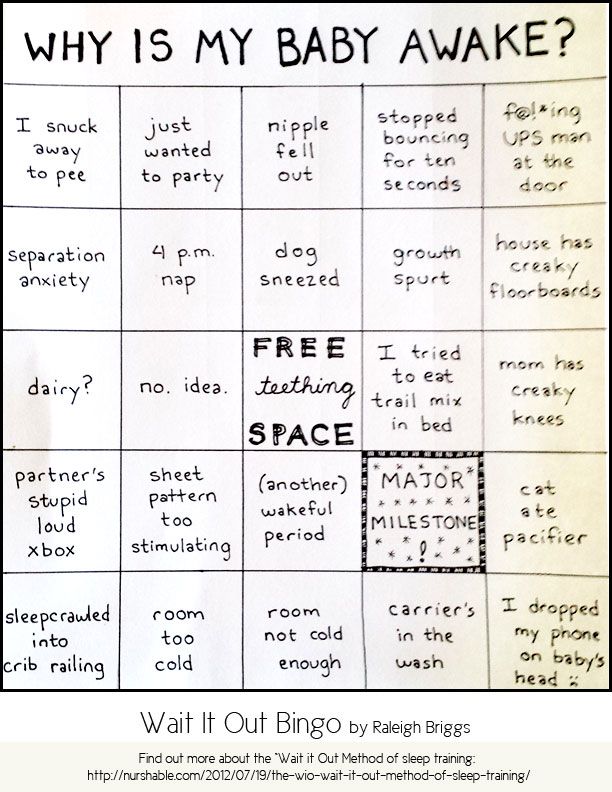
No...at least not in the way you’re likely thinking! Young infants need to wake every two to four hours to feed. Plus, they’re not yet wired for super-long stretches of nighttime sleep. (Talk to your kiddo’s pediatrician about when is the appropriate time to night-wean your baby.) However, you can set your newborn up for sleep success by offering them a womb-like environment that cues their sleep response. For instance, swaddling mimics the hug of being in the womb and white noise replicates the constant whooshing of blood moving through the uterine arteries. Tapping those sensations, essentially, sleep trains babies naturally...and early. (SNOO, the award-winning smart sleeper, utilizes those sleep cues, plus rocking—which stands in for the jiggling sensation of being inside the womb—to effortlessly sleep train babies.)
How long does sleep training take?No matter which sleep training technique you decide on, know that the time it takes differs for every caregiver. ..and every baby! Generally speaking, most sleep training strategies will take about a week to implement, but sometimes it’ll take longer depending on your method…and your consistency. If you’ve been trying to sleep train your precious bundle for two weeks with no luck, consider checking in with your baby’s pediatrician for advice.
..and every baby! Generally speaking, most sleep training strategies will take about a week to implement, but sometimes it’ll take longer depending on your method…and your consistency. If you’ve been trying to sleep train your precious bundle for two weeks with no luck, consider checking in with your baby’s pediatrician for advice.
While it’s 100% accurate that sleep training can be very stressful for parents, rest assured, if your baby is developmentally ready and in a safe sleep environment, sleep training—no matter the method—is perfectly safe. In fact, research in the journal Pediatrics notes that no long-term differences have been found between children who’ve been sleep trained as babies and those who weren’t. In addition, another study found that successful infant sleep training significantly improves mom’s mood. (Not surprising!)
How to Sleep Train a BabyThere are lots of sleep training techniques to choose from. ..sometimes they’re used on their own, others overlap, and still sometimes they get combined. So, whatever works for you and your baby is the right sleep training method to choose.
..sometimes they’re used on their own, others overlap, and still sometimes they get combined. So, whatever works for you and your baby is the right sleep training method to choose.
“Cry it out” is the most widely known sleep training method and it requires you to not intervene if your baby is fussy or crying when you put them down at bedtime. This is sometimes called the “extinction” sleep training method. Since some babies have specific health or feeding needs, it’s not a bad idea to speak to your baby’s pediatrician before starting CIO.
How to do it: Here, there’s no rocking or nursing your baby to sleep. Instead, with the “cry it out” sleep training method, you feed, burp, and change your baby and put them in their bassinet drowsy, but still awake. You say goodnight and then...leave. You exit if your baby is softly cooing and about to drift off...or if they’re fussing or crying. And once you leave, you’re not to come back until your baby’s next scheduled feeding or they wake in the morning. This, of course, means you need to try your darndest to tune out your baby’s tears. And, well, it can be rough.
This, of course, means you need to try your darndest to tune out your baby’s tears. And, well, it can be rough.
The idea behind the wake-and-sleep method is to gently wean your little one off of being held or rocked to fall asleep for all naps and night-nights. This is, quite possibly, the gentlest way to teach your baby to self-soothe and sleep through the night.
How to do it: Every bedtime, swaddle your baby and turn on some white noise, making it as loud as a shower. Next: Feed and burp your sweet pea and allow them to fall asleep in your arms before you lay them down in their bassinet (safely on their back, of course). BUT right after you put your munchkin down, gently rouse them with a light tickle on the neck or feet until they open their eyes. After a few seconds, your baby will close their eyes again and slide back into dreamland. If your little one fusses, go ahead, and pick them up for a feed or some comfort, but then be sure to wake your newborn again when you put them back down.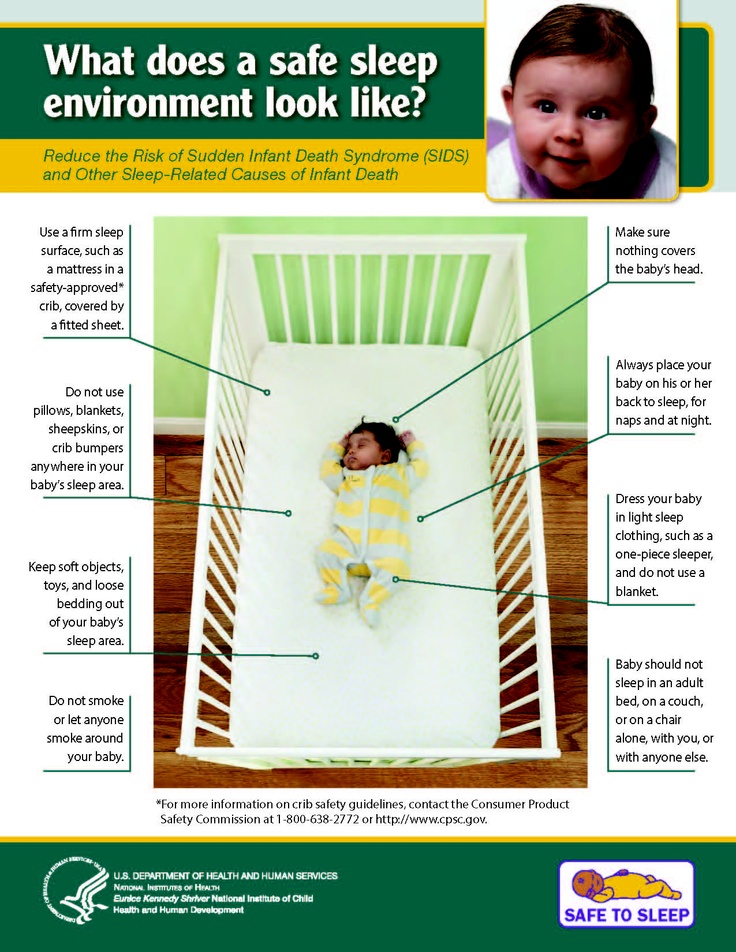 Sounds crazy, right? Who wakes a sleeping baby?! But those few seconds of drowsy waking are the first steps to helping your infant learn how to self-soothe and sleep through the night.
Sounds crazy, right? Who wakes a sleeping baby?! But those few seconds of drowsy waking are the first steps to helping your infant learn how to self-soothe and sleep through the night.
This is sometimes dubbed the check-and-console sleep training method or “graduated extinction.” The Ferber method is very much like "cry it out," except you take baby steps toward the end goal. Since the Ferber method is another form of CIO, it’s smart to consult your pediatrician before starting.
How to do it: After you do the whole feed-burp-change routine and place your awake baby down, leave the room a la "cry it out." However, with the Ferber sleep training method, if your baby cries, you return to their room and check on your nugget at specific, graduated intervals. For instance, you come back 5 minutes later to shush or gently speak to your baby, then promptly leave again. If your tot is still crying, return after, say, 10 minutes. (The time between each check-in should get longer.) Much like "cry it out," the Ferber method stresses that you don’t pick up your baby when you return to the room.
(The time between each check-in should get longer.) Much like "cry it out," the Ferber method stresses that you don’t pick up your baby when you return to the room.
This sleep training strategy involves a chair, a lot of time, and a lot of patience, too. (This is also referred to as the camping-out sleep training method.) Like the Ferber method, you work to sleep train your baby in gradual intervals. Again, it’s a good idea to consult your baby’s healthcare provider before starting.
How to do it: You know the drill: Place your drowsy, well-fed, freshly burped and just-changed baby into their bassinet. But instead of leaving the room after saying goodnight, you sit next to your baby’s bed...only leaving after your bub has dozed off. If your baby cries, you return to the room and sit down again. No picking up allowed, but you can offer gentle verbal reassurances. Every few nights, you gradually move your chair closer and closer to the door, until you finally leave the room.
This sleep training technique is like the Ferber method, but when you return to check on your baby at specific, graduated intervals you can go ahead and provide some direct physical comfort. This is sometimes called the “shush, pat” sleep training method.
How to do it: Feed, burp, and change your baby, putting them down while still awake. If your tot fusses or cries when you place them in their bassinet, you don’t have to plug your ears and leave the room. Instead, feel free to pat their little tummy or place your hand on them, offering soft shushes or sweet words. You can even pick your baby up, as the “pick up, put down” name states. The key, however, is to be brief. Pick your baby up, soothe them enough so that they settle, then put them back in their bassinet, and skedaddle. You repeat this loving-but-brief routine whenever they cry.
Sleep Training Tips-
Create a bedtime routine.
 Most babies are very receptive—and able—to establish a bedtime routine when they’re around 6 to 8 weeks old. Reliable routines help your little one begin to recognize getting-ready-for-sleep cues...and then respond with sleep. A routine that encompasses a relaxing bath, followed by a swaddle, some white noise, a feed—and a consistent bedtime—are often ideal.
Most babies are very receptive—and able—to establish a bedtime routine when they’re around 6 to 8 weeks old. Reliable routines help your little one begin to recognize getting-ready-for-sleep cues...and then respond with sleep. A routine that encompasses a relaxing bath, followed by a swaddle, some white noise, a feed—and a consistent bedtime—are often ideal. -
Start smart. It’s best to avoid sleep training during a chaotic period at home, like when your baby is teething, there’s a time change, a new caregiver starts or a parent heads back to work, or when you’re transitioning your baby to their own room. (PS: Starting on a Friday gives you the weekend to ride out the biggest bumps.)
-
Look for sleepy clues. It’s always best to start your baby’s sleep routine when they're tired, but not asleep. So, look for signs of sleepiness in your baby, including them rubbing their eyes, fluttering or droopy eyelids, yawning, and/or pulling at their ears.

-
Put your baby down awake. All sleep training methods revolve around your wee nugget being able to fall asleep on their own. To do that, your baby needs to be awake when you put them in their bassinet.
-
Don’t rush to respond. If you’re following one of the gentler sleep training methods, that doesn’t mean that you should go to your baby at their first whimper. Responding too quickly to every sound can derail your child’s self-soothing efforts.
In the end, remember this: Some sleep training techniques simply won’t work for you. Don’t beat yourself up about it! Like so many things in life, sleep training your infant might take some trial and error. So, if the sleep training method you decided on isn’t working, don’t be afraid to try a new one—or combine two techniques. But once you land on one that’s working—be consistent! Give your baby at least a week to figure it all out.
For more advice on how to set your baby up for sleep success, check out The Happiest Baby Guide to Great Sleep.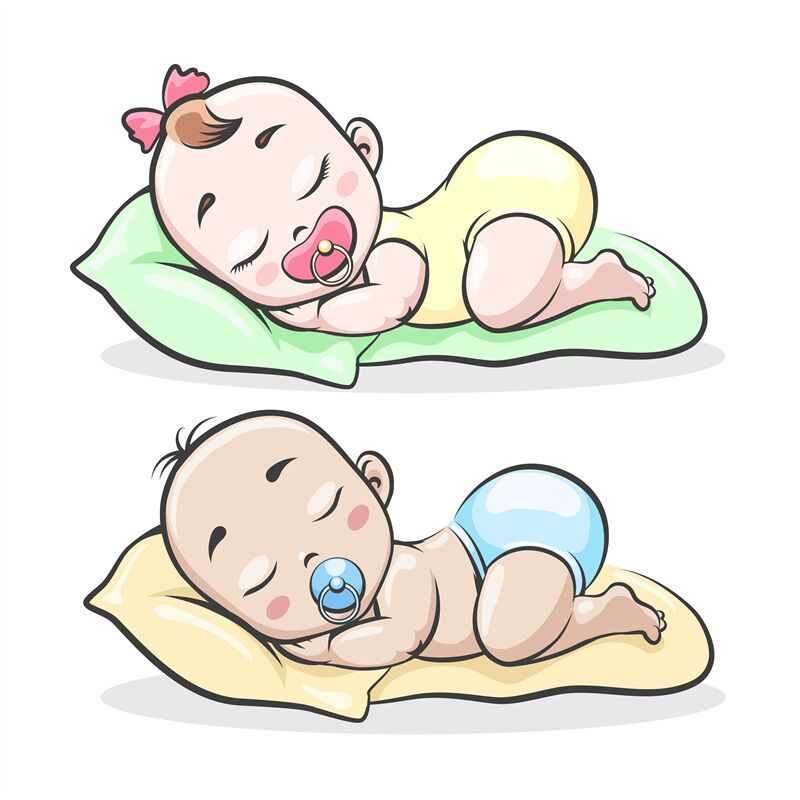
View more posts tagged, sleep
Have questions about a Happiest Baby product? Our consultants would be happy to help! Connect with us at [email protected].
Disclaimer: The information on our site is NOT medical advice for any specific person or condition. It is only meant as general information. If you have any medical questions and concerns about your child or yourself, please contact your health provider.
Putting the child to sleep: useful tips and recommendations
Author, editor and medical expert - Muraeva Yulia Yurievna.
Views: 207 562
Last update date: 06/23/2022 G.
average reading time: 12 minutes
Content:
Rhythm of children's sleep
How to properly laid it out properly sleep baby
How to help your baby sleep
How to teach a child to sleep in his own crib?
Bedtime rituals
What are the bedtime rituals?
Sleep is an important part of life, so it must be regular and of high quality 1 . But often the first year of a child's life becomes a real test for parents. Even such a seemingly simple action as putting a newborn to sleep sometimes turns into a task of increased complexity.
But often the first year of a child's life becomes a real test for parents. Even such a seemingly simple action as putting a newborn to sleep sometimes turns into a task of increased complexity.
The difficulty is that in infants, sleep is still being formed, and circadian rhythms differ from those to which parents are accustomed 2 .
Rhythms of baby sleep
Before birth, the alternation of sleep phases in the fetus is subject to circadian (daily) rhythms and fluctuations in the hormonal background of the expectant mother. After giving birth, it takes time for the child to mature its own regulatory system 2 .
A term newborn sleeps an average of 16-17 hours 2 , and the total duration of sleep is not affected by dark and daylight hours 3 .
Babies up to 2 months have 2 sleep phases 2.3 :
- Active sleep. Starts after falling asleep. This phase is important for the stimulation and development of the central nervous system.
 During active sleep, you can observe the baby's mobility, rapid eye movements and a weakening of reactions to external stimuli (light, sound, touch).
During active sleep, you can observe the baby's mobility, rapid eye movements and a weakening of reactions to external stimuli (light, sound, touch). - Peaceful sleep. Follows the active phase. During restful sleep, the heart rate slows down, the movements of the eyeballs stop, and the baby stops moving his arms and legs. nine0063
Together these 2 phases form a cycle. Each cycle begins with active sleep followed by restful sleep. The duration of such a cycle is approximately 45-60 minutes 3 .
But the sleep-wake cycle lasts longer. For breastfed babies, it is approximately 1-3 hours, and for artificial babies, it is 2-5 hours 3 .
Gradually lengthening periods of wakefulness, and most of the sleep occurs at night 2 :
- By the end of 3 months of life, an uninterrupted night's sleep can be about 5 hours 3 .
- From 2 to 12 months, babies sleep 9-10 hours at night 3 , while daytime sleep is divided into 1-4 episodes that can last from 30 minutes to 2 hours 3 .
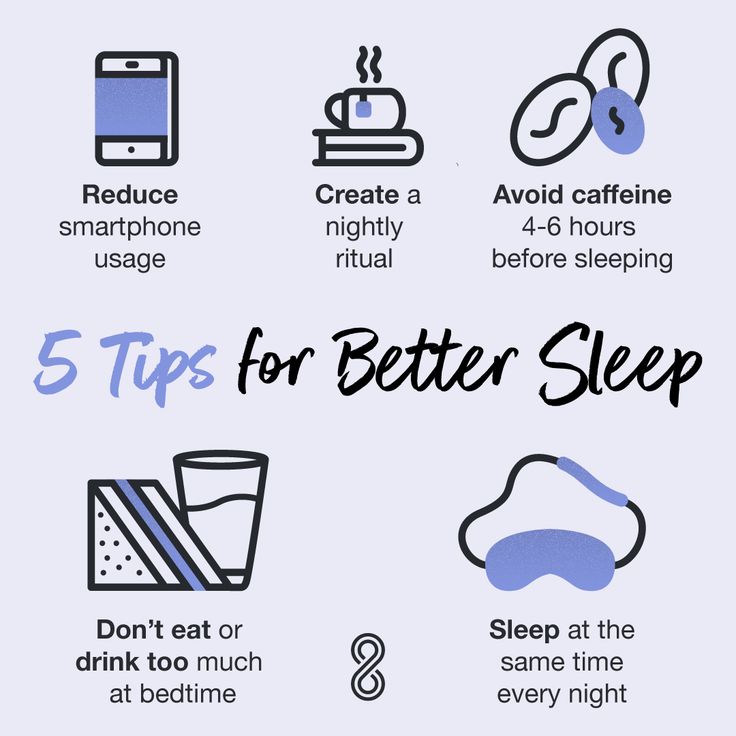
Sleep regularity and sleep disturbances can be assessed after 6 months, when the child develops circadian rhythms 3 .
Although the night sleep becomes longer, each cycle is still accompanied by micro-awakenings (wakings) 2.3 , after which the baby can fall asleep quickly enough. This is a short-term activation of the central nervous system, which must be distinguished from a full awakening 2 . It is good if at this moment the mother is nearby and helps the child fall asleep again.
Back to Contents
How to Put Your Baby to Sleep
The American Pediatrics Association has developed guidelines for safe sleep for babies. Below are some of them (the full list of recommendations can be found at the link) 4 :
- The best sleeping position is on your back.
- The mattress should be hard enough, and the crib should not be cluttered with things, blankets, pillows.
- No smoking in the nursery.

- If the child sleeps in a cool room, it is better to dress him warmly or put him in a special sleeping bag for babies. He should be warm, but not hot, so it is not recommended to wrap him with a blanket. And in order for the baby to breathe freely, in no case cover him with a blanket with his head. nine0063
Babies up to 12 months of age still need to feed at night, so sleeping in the same room with the mother may be necessary to optimize breastfeeding and closer contact 4 . Co-sleeping in the same room with parents does not mean that the child will sleep with them in the same bed, because it does not meet the safety requirements 4 .
Before putting your newborn to bed, also remember that:
- Tight swaddling is not recommended0036 4 . There are babies who find this soothing, but swaddling can interfere with the baby's breathing because the chest is compressed and the baby cannot take a deep breath.
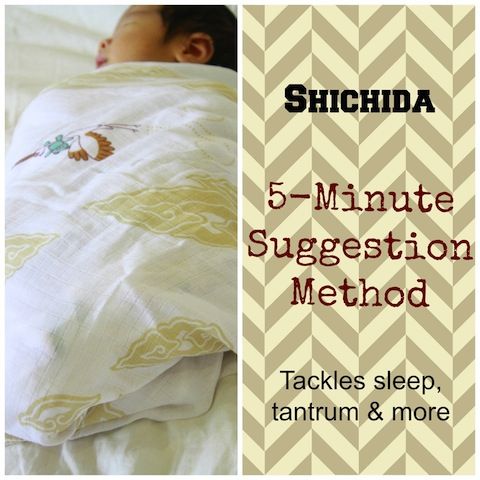 4 . Tight swaddling also increases the risk of a lung infection and can aggravate hip dysplasia. Do not swaddle a baby who is already rolling over from his back to his stomach 4 .
4 . Tight swaddling also increases the risk of a lung infection and can aggravate hip dysplasia. Do not swaddle a baby who is already rolling over from his back to his stomach 4 . - There is no consensus on the use of pacifiers. Some experts believe that they have a negative effect on breastfeeding and interfere with the formation of the correct bite. Other evidence suggests that pacifiers help reduce the risk of respiratory and cardiac problems in infants up to 12 months of age 4 .
- Don't encourage falling asleep in your arms or while feeding. Older babies do not need to be allowed to fall asleep while watching a movie, after a set time, or in their parent's bed 4 .
Back to content
How to help your baby fall asleep
As the baby develops, fears, anxiety, anxiety may appear when he refuses to sleep separately from his parents and resists falling asleep 2 . The maturation of biological rhythms is facilitated by the environment of the child, the behavior of parents, compliance with the regimen and rules of sleep hygiene 3 .
The maturation of biological rhythms is facilitated by the environment of the child, the behavior of parents, compliance with the regimen and rules of sleep hygiene 3 .
To ensure quality rest and proper development, parents need to follow the recommendations. Specialists advise following these rules 4 :
- Put the baby to bed in the evening and wake up in the morning at about the same time, despite weekends and holidays 4 .
- Avoid physical activity before bed 4 .
- Limit activities in bed that are not related to falling asleep (playing, feeding), as this interferes with the baby's understanding of sleep 4 .
- Keep the bedroom comfortable - moderate temperature, low lighting, minimal noise, comfortable pajamas 4 .
- Form a laying ritual 5 .
- Follow the diet - the baby should not have any hunger or overeating. Before going to bed, you can feed him a little 5 .

- Keep an activity diary so that you can analyze and understand what interferes with your child's sleep 4 .
Back to Contents
How can I get my baby to sleep in his own crib?
There are various methods to help a child fall asleep on his own, without the help of parents. They are often used as a non-drug treatment for insomnia (sleep disorder) in young children aged 1 to 3 years 4 . Examples of such techniques are described below. Choosing the right one for your baby should be discussed with a baby sleep specialist. nine0003
One way to overcome sleep disorders is through behavioral therapy. It helps to change wrong associations and sleep patterns in a child 4.7 . In behavioral therapy, the abandonment method is used. With him, parents immediately leave the child in the crib and leave the nursery. However, they do not return when they hear his cries or call, giving him the opportunity to fall asleep on his own 4 . But psychologists do not recommend using this approach if the baby is not yet 6 months old and is breastfeeding 4 , as this may adversely affect the baby's condition.
But psychologists do not recommend using this approach if the baby is not yet 6 months old and is breastfeeding 4 , as this may adversely affect the baby's condition.
In addition, the abandonment method is not suitable for all parents. For those who want to be near or calm a crying baby 4 experts recommend other methods - "check and hold" or "gradual repayment" 4.7 .
Back to Contents
"Checking and Holding"
When getting ready for bed, the parent spends some time with the child, then puts him to bed and leaves the room or goes to bed if she is in the nursery. At the same time, they do not approach the baby for 15-20 minutes and do not react to his crying or screaming. This period is called "hold" 7
When the 20 minutes have elapsed, the parent goes to the child, straightens his bed and returns to himself. This part is called checking 7 .
It is very important not to take him out of the crib and feed him when he wakes up.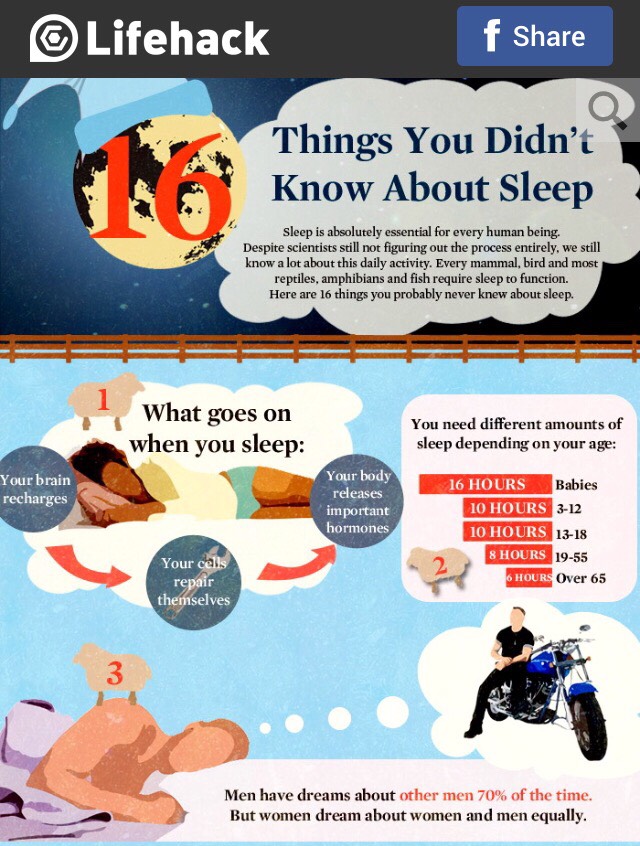 The exception is children who require night feedings for age or medical reasons. In all other cases, the parent simply comes to the crib for a short time to check, and then leaves again for a 15-20 minute “hold” 7 .
The exception is children who require night feedings for age or medical reasons. In all other cases, the parent simply comes to the crib for a short time to check, and then leaves again for a 15-20 minute “hold” 7 .
Gradually - over several nights - increase the "hold" interval to 30 minutes 7 .
Up to content
Gradual repayment
This technique is designed to “repay” the child's protests and manipulations 7 . There are 2 options for "gradual repayment" - with and without the presence of a parent 4 .
The classic option is to leave the baby alone in the bedroom for a certain amount of time, gradually accustoming him to fall asleep on his own. Unlike the “check and hold” method, the child can be calmed down. But you need to return to his bed not at the first call, but after a certain time. After the child calms down, you need to leave again, increasing the intervals when he tries to fall asleep without you 7 . This option is suitable for babies over 6 months old 4 .
This option is suitable for babies over 6 months old 4 .
Until the age of six months, use the “gradual repayment” method in the presence of a parent. It is carried out in stages 4 :
- The parent puts the baby to bed and sits next to it. If the bed is large, you can lie down next to the child.
- On subsequent nights, mom or dad still stays close to the baby, but gradually reduces the number of touches, communicates less with him, showing him that they are busy with something, for example, reading or cleaning the room. nine0063
- When putting the child to bed, the parent does not lie down next to him, but sits on a chair not far from the bed, about 5 meters from it, continuing to sit until the baby falls asleep.
- In the next step, the distance between the bed and the chair is increased by gradually moving it away.
- A little later you can leave the nursery for a while, but be sure to return before the baby cries.
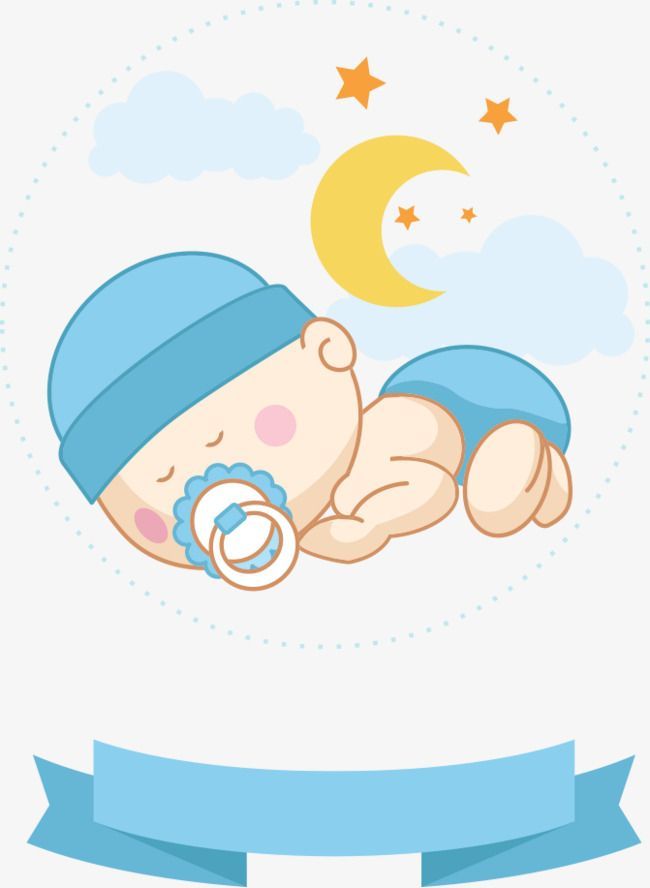
If the child wakes up, repeat the same steps that you perform at this stage of the procedure. The stages can be stretched over several days so that the baby has time to get used to each 4 .
Up to contents
Bedding rituals
Forming a bedding ritual is considered to be an effective method 4 . It can complement the "repayment" technique, but sometimes it works quite well on its own. Suitable for all ages, but the earlier it is started, the less likely babies are to develop sleep problems - they fall asleep faster and sleep longer 4 .
The ritual begins at the moment of the child's drowsiness. Before you put the baby to sleep, you need to perform a number of actions. They should be predictable, regular, relaxing and positive. The total duration of the ritual is 20-45 minutes 4 . If it was not possible to meet the set time, most likely, you need to shift the ritual to another time and wait for drowsiness. It can manifest itself as loss of interest in surrounding toys and people, reddening of the eyelids, rubbing of the eyes, yawning 4 .
It can manifest itself as loss of interest in surrounding toys and people, reddening of the eyelids, rubbing of the eyes, yawning 4 .
Back to Contents
What are the rituals for falling asleep?
Experts recommend preparing for sleep, which consists of consecutive, daily repeated actions, the so-called routines 5 . They help to speed up falling asleep, increase the quality and duration of sleep, reduce the number of night awakenings 5 .
The most typical nightly rituals 6 :
- Bathing in warm water with your favorite foam or bath product, light massage.
- Soothing sounds - "white noise". This is a monotonous noise that does not carry a semantic load, soothes and helps to forget, for example, flowing water, a metronome, ticking clocks or recordings of nature sounds. nine0063
- Lullabies and fairy tales.
- Wishes for "good night", "sweet dreams" or other phrases that are said only before going to bed.
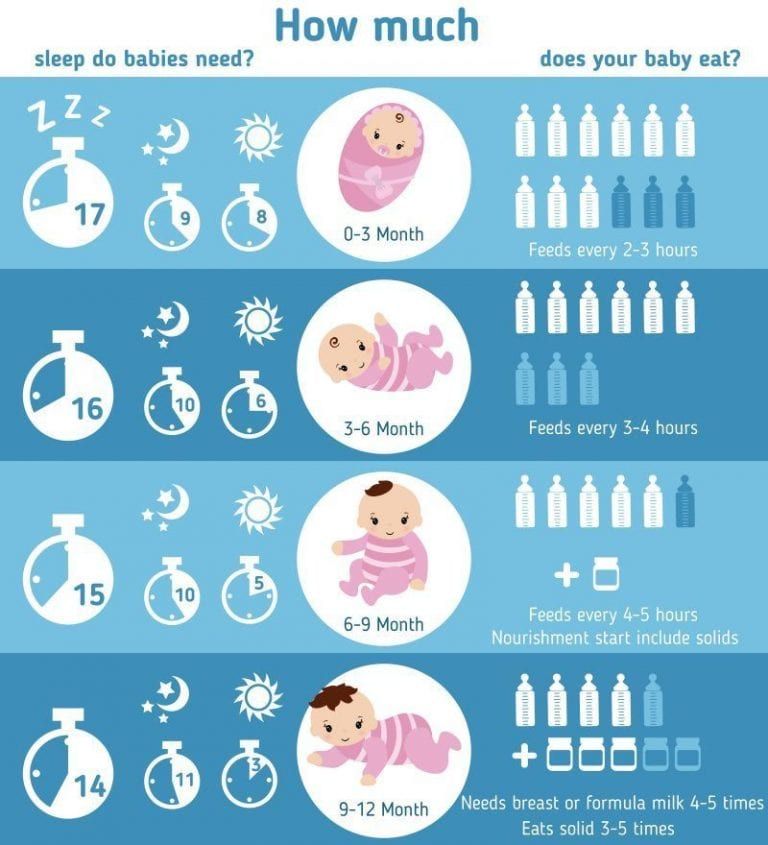
Sleep experts recommend a three-step ritual that includes bathing, massage and quiet time in the crib 8 .
- Bath foam can be used during bathing. For babies from 6 months, JOHNSON’S ® Baby Bath Foam "Before Bed" is suitable. It has a soothing scent to help your baby get ready for bed 8 .
- Immediately after a warm bath, a milk can be applied to the skin, such as JOHNSON’S ® Bedtime Milk 8 , for children over 6 months of age, by lightly stroking the skin. Such a massage will calm the baby even more and prepare him for sleep, especially thanks to the pleasant smell of milk 8 .
- At the third stage, you need to change the child into pajamas, read a bedtime story or sing a lullaby 4,8 .
As a rule, a few days are enough to form an association between the evening routine and falling asleep 4 .
As you can see, pediatricians and psychologists have developed various methods for healthy children's sleep and fast falling asleep. But you need to use them, taking into account the age of the child, his habits and characteristics of the nervous system. The task of parents is to organize the baby’s daily routine and prepare him for sleep, calming and creating positive associations with the process of falling asleep. With the correct implementation of the recommendations of a specialist, the child will gradually learn to fall asleep independently and faster, will sleep longer and sounder. nine0003
But you need to use them, taking into account the age of the child, his habits and characteristics of the nervous system. The task of parents is to organize the baby’s daily routine and prepare him for sleep, calming and creating positive associations with the process of falling asleep. With the correct implementation of the recommendations of a specialist, the child will gradually learn to fall asleep independently and faster, will sleep longer and sounder. nine0003
You may also be interested in:
Traveling with your baby
Baby's Skin Care Guide
Back to Contents
The information in this article is for guidance only and does not replace professional medical advice. For diagnosis and treatment, contact a qualified specialist.
References:
- E.S. Sakharova. What worries the baby? Pediatric pharmacology, 2010, volume 7, No. 2, pp. 143-148. nine0063
- I.A. Kelmanson. Formation of the state of sleep in ontogeny and the problems arising from this.
 Neurology and psychiatry. Special issue "Sleep and its disorders-5". Effective pharmacotherapy, 2017, No. 35, p.4-13
Neurology and psychiatry. Special issue "Sleep and its disorders-5". Effective pharmacotherapy, 2017, No. 35, p.4-13 - M.G.Poluektov, P.V.pchelina. Sleep in children: from physiology to pathology. Medical Council, 2017, No. 9, pp. 98-103.
- P.V.Pchelina. M.G.Poluektov. How to treat insomnia in early childhood. Neurology and psychiatry. Special issue "Sleep and its disorders-4". Effective pharmacotherapy, 2016, No. 19, pp.52-60.
- Jodi A. Mindell, PhD; Lorena S. Telofski, BA; Benjamin Wiegand, PhD; Ellen S. Kurtz, PhD. A Nightly Bedtime Routine: Impact on Sleep in Young Children and Maternal Mood. (The Nightly Sleep Schedule: Effects on Young Children's Sleep and Maternal Mood) SLEEP (Sleep), Vol. 32, no. 5, 2009. pp. 599-607.
- E.A. Korabelnikova. Treatment and prevention of insomnia in young children. Russian Psychiatric Journal, 2012, No. 3, pp. 62-70.
- M.G. Poluektov Sleep disorders in childhood: causes and modern therapy // Effective pharmacotherapy, Neurology and psychiatry.
 1/2012
1/2012 - Mindell J, Lorena S, Telofsky BA et al. Nightly sleep routine: effects on young children's sleep and maternal mood. Sleep. 2009; 23:599–606.
Up to Contents
Family Tree - On the Sleep Bridge: How to Teach Your Baby to Fall Asleep Quickly and Without Tears
A newborn doesn't have a daily routine. How this regime develops depends not only on the temperament and physiology of the infant, but also on the actions of his parents. The science of healthy baby sleep is for observant and patient moms and dads, but the reward is high: a happy, well-developing baby and a calm, well-established family life. nine0003
Serious business
Sleep must be respected and appreciated. This is a period that compensates for the wakefulness phase, with its emotional and physical stress, illness and fatigue. Sleep deprivation in an adult causes a 45% decline in productivity. Chronic lack of sleep is a common cause of depression, overeating (and, as a result, obesity), changes in behavior and temperament, and irritability. The most dangerous thing is that attention drops sharply: remember how many accidents happen due to the fault of drivers who fell asleep at the wheel. nine0003
The most dangerous thing is that attention drops sharply: remember how many accidents happen due to the fault of drivers who fell asleep at the wheel. nine0003
Why should a child sleep? It is in a dream that it grows and develops (the secretion of growth hormone occurs in the first two hours after falling asleep), during this period his body receives rest and energy. Quality sleep means good memory and attention, protection of the psyche from overwork, strong immunity (children with good sleep get sick 30% less).
And on the other hand, according to the characteristics of behavior, one can assume a lack of sleep. If, for example, a child often hits walls and corners, cannot focus, is whiny and capricious - it is possible that he simply does not get enough sleep. nine0003
Children's sleep is so important that no amount of early childhood education, visits from guests, adult activities, and changes in family life should interfere with it. This is no less important for well-being and health than nutrition and safety in general.
Regime subject
Although all children are different and the lifestyle in each family is individual, both kids and parents need a regime. The child feels better and develops more effectively in a predictable environment of repetitive cycles. We depend on biorhythms, and in the long term, such synchronization is necessary for the adaptation of a small person to society: at night we all sleep, during the day we are awake. nine0003
For a mother, the sleep and wakefulness of a child is a prevention of burnout and a nervous breakdown. So she has the opportunity to plan something, this creates a feeling of control over her life. Otherwise, when there is no regime, the whole family is involved in a series of endless hours of bedtime, early rises and late falling asleep exhaust everyone in the house, plus children's tears and tantrums before bedtime. It shouldn't be like that!
Already by three months, you can develop a comfortable sleep-wake cycle, and from 9-10 months and live by the clock. In addition, as we grow older, the number of daytime sleep episodes decreases, and the main sleep occurs at night. Usually this is five hours without waking up for night feedings. But in order to build such a schedule, it is important to learn how to get into the so-called sleep window.
In addition, as we grow older, the number of daytime sleep episodes decreases, and the main sleep occurs at night. Usually this is five hours without waking up for night feedings. But in order to build such a schedule, it is important to learn how to get into the so-called sleep window.
Window of Opportunity
Children's sleep experts have come to the conclusion that the best way to organize a routine is to observe how your baby behaves during the day. The secret is to "catch" the moment when he just started to get tired, but still in a good mood. In infants, the processes of mental excitation proceed more intensively than inhibition - therefore it is very important to start laying down at a time when natural activity is waning. Leave business - and lead our sleepyhead along the bridge of sleep. nine0003
Signs of tiredness: rubbing eyes, yawning, acting up, bad mood, losing interest in people and play, turning away, becoming less mobile, tugging at his ear, looking sleepy. Sometimes the first yawn and tearfulness means you've missed the first stage.
Sometimes the first yawn and tearfulness means you've missed the first stage.
If these first signs of approaching drowsiness are not caught, the child may become overexcited, act up, cry, not breastfeed, refuse to fall asleep. And in this state, putting him to sleep becomes a hundred times more difficult! If he "overdoes", he may have a second wind - and he is again ready to play and communicate. But severe fatigue will sooner or later make itself felt and can turn into tantrums and tears. nine0003
Bridge to Sleep lasts 20 minutes. At this point, parents should dim the lights and sounds in the room, reduce activity, create a calm background. Good sleep is possible only where it is quiet, dark, neither hot nor cold, where the air is humid and clean.
On average, the distribution of wakefulness and sleep phases by months is as follows: Is it possible to teach a child to fall asleep on his own? How long should the laying ritual last? nine0003
It is generally accepted that the presence of an infant in the mother's womb teaches him to rock.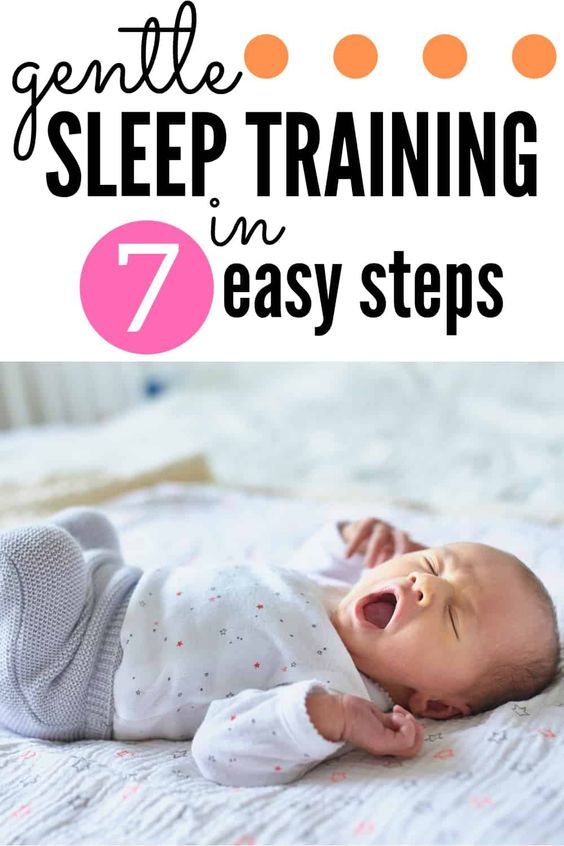 But if this pattern is not maintained immediately after birth, then attachment to it will not form! A lot of children who have not been rocked fall asleep calmly and without any shaking and lulling. Only from stroking, for example. Or from the sound of water, or from my mother's voice.
But if this pattern is not maintained immediately after birth, then attachment to it will not form! A lot of children who have not been rocked fall asleep calmly and without any shaking and lulling. Only from stroking, for example. Or from the sound of water, or from my mother's voice.
A bedtime ritual is essential - but it doesn't have to be rocking in your arms or in a wheelchair. The ritual can be individual, carried out once and ideally last no more than ten minutes. It marks the beginning of sleep, introduces into it, relaxes, saturates the baby with attention, contact and love. nine0003
It is important that the child falls asleep where he will sleep, because his consciousness fixes the circumstances of falling asleep, and upon awakening (not final, intermediate, half asleep) he will not understand where he was transferred and where he ended up. The whole dream will instantly disappear - and you will have to put the disturbed baby to bed again. Such associations associated with sleep begin to form from the age of four months.
Rules for co-sleeping
There is no consensus on the benefits and harms of co-sleeping - all children are different, all families are not alike. And even the harsh intentions of parents (to sleep or not to sleep with a child) sometimes break into reality, which makes its own adjustments. With experience comes flexibility in this (and not only this) matter. The main criterion is that everyone gets enough sleep. nine0003
However, experts agree on one thing: to avoid an accident, it is important to follow a few rules for co-sleeping. Older children or animals should not sleep in the crib with the baby. The mother should not wear long jewelry, her clothes should not have straps or ribbons longer than 20 cm. Parents should not use alcohol, drugs, sedatives or sleeping pills, be overweight or be extremely tired (sleep too hard). If dad or mom feel that they are literally falling asleep, the child should be put separately. nine0003
Inspection of the crib
If you sleep separately, you need to prepare the crib.

